Adobe Stock’s 2021 creative trends: resilience rising
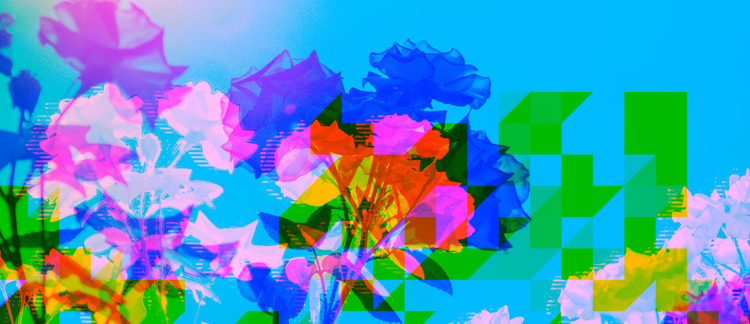
Image source: Adobe Stock/Wizemark/Stocksy United.
The past twelve months have tested us all. For creatives, the changes brought about by the COVID-19 pandemic had a drastic impact on how we work and come up with new ideas and aesthetic visions. Sheltering in place, facing the loss of work and contracted social lives, many of us struggled to find unique trends and visual excitement. The days quickly become homogenous and inspiration has been hard to find.
Brands reacted to international restrictions around activities with extremely cautious, restrained messaging. No one wants to look like they are capitalizing on tragedy, yet staying silent is not always an option, either. From the biggest brands to the smallest studios, the themes we saw repeated throughout media were centered around connection, comfort, and wellbeing: How can we connect and stay connected while physically apart? How can we support each other? And how can we maintain our physical and mental health in the face of extraordinary difficulty?
We found these foundational themes again and again in visual culture, editorial, search and customer data — and they are deeply woven throughout our 2021 Creative Trends.
Every year, we combine myriad sources, consumer signals, and the deep experience of the Adobe Stock creative team to release our annual trend forecast. Last year, we expanded our forecast from photography, illustration, and vectors to include motion graphics, graphic design, 3D renders and immersive experiences. This year, we are expanding our scope again, introducing our first-ever lineup of audio trends.
Across all creative mediums, the 2021 trends feel especially meaningful — reflecting a range of reactions to the hardships of the past year, and the hopeful, regenerative spirit with which creatives face the year ahead.
2021 Visual Trends
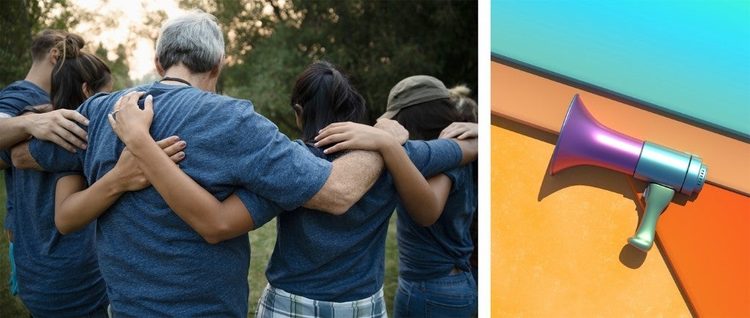
Image source: Left: Adobe Stock/Hero Images. Right: Adobe Stock/Colin Anderson/Stocksy United.
Compassionate Collective
In a time of tumult and change, the desire to hold on to the foundational values we share only becomes more urgent. This trend truly speaks to the depth of what so many of us are feeling and how we are living today. No trend emerges from a vacuum, and with shifts in our culture, so shift the interests of consumers and viewers.
Over the past several years, the collective drive to associate with brands that share and demonstrate our values has continued to gain momentum, and the Compassionate Collective is a visual trend that expresses that craving, along with the desire to connect with strength and empathy. People are asking: how can we come together and support each other, physically and mentally, through entrepreneurship and cooperation? Agencies and brands are answering with campaigns that take a democratized approach to imagery, centering a diverse array of individual expressions. TikTok’s #ItStartsOnTikTok and the Girls Who Code digital #MarchForSisterhood are standout examples.
The growing appreciation of collective action and the power of direct activism and mutual aid all gained new dimension and urgency during 2020, as many high-profile incidences of police brutality sparked passionate protests, Black Lives Matter and the wider racial justice movement made headlines, while the coronavirus pandemic shook our confidence in the systems on which we rely. In the face of injustice, fear, and widespread economic insecurity, many have responded by reaching out to their neighbors, getting directly involved in their communities, and looking for ways to directly create positive change.
The effects of these movements and emotions are now rippling through our culture, making this a potent and heartfelt source of visual inspiration that we expect to grow.
Gallery: Compassionate Collective on Adobe Stock
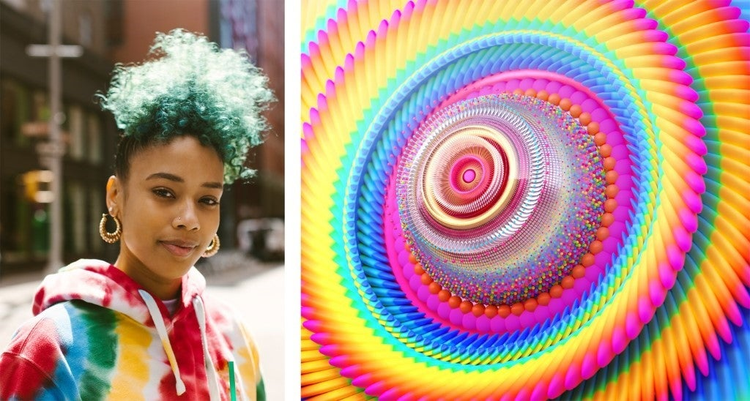
Image source: Left: Adobe Stock/ Lauren Lee/Stocksy. Right: Adobe Stock/ Luke & Morgan Choice/AvantForm.
Mood-Boosting Color
You may have noticed this trend popping up all around you lately — in magazines, on billboards, in shop windows, shoes and clothes, in the digital and analog world: bright, saturated, spectrums of color are everywhere.
The power of color is nothing new, but it is exactly what we need right now. Bright, more saturated colors have the happy psychological effect of making us feel more awake and alive, lifting our mood when we are down and giving us a shot of much-needed energy. Spirited spectrums add a dose of optimism, while primary palettes feel approachable and friendly.
Aside from adding a vibrant spirit to our monochrome days, the Mood-Boosting Color visual trend expresses a feeling of joy and power that is strong and defiant while still retaining a sense of playfulness.
Rainbows have long been associated with LGBTQ+ Pride, diversity, and self-expression. Now the associations around rainbows are expanding, encompassing joy as resistance and personal power. In a time where Black people and allies have taken to the streets en masse to demonstrate for racial justice, and the health pandemic is disproportionately affecting Black and brown people in the U.S., Black journalists and thought leaders spoke out about the power and relevance of Black joy. Visuals celebrating Black joy continue to scale across brand campaigns like the #BlackJoyMatters campaign from photo-sharing community VSCO, while the term has spread organically across social media.
Color will always communicate playfulness, and through its simplicity, may appeal to everyone of any age. Especially during difficult times, people need to laugh, find relief, and lift their spirits. This trend offers all of this, with a deeply personal, positive — and occasionally political — message.
Gallery: more Mood-Boosting Color on Adobe Stock
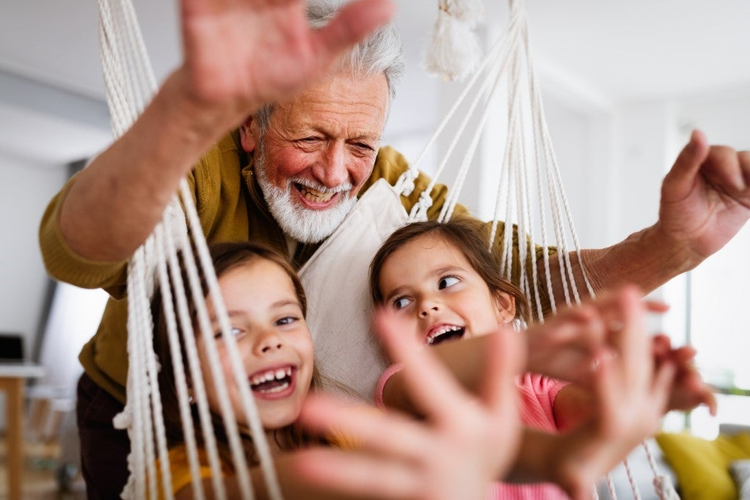
Image source: Adobe Stock/NDABCREATIVITY.
Comfort Zone
Since at least 2018, we have been watching a shift in how people use their home as a hub: a hub for family life, yes, but also for work, hobbies, learning, and play. For millennials in particular, the home has shifted from being a place where we sleep at night to the center of our family and social lives. With the public health and safety restrictions brought about by the pandemic, 2020 saw a huge uptick in our home as our hub, and this trend enveloped us all. In 2021, we’ll see much more of this visual trend throughout every type of campaign and creative visuals — and we are calling it Comfort Zone.
Millennials were already nesting and entertaining more at home than were previous generations. The combination of stagnant salaries and improved technology with ever-expanding ease of access, we can save money and do more than ever at home: stream movies and tv shows — access music and games — find and order nearly anything we want from the internet and delivery apps, 24/7. Social media platforms have responded to users focus on self-care and comfort: see Instagram’s Guides to “support well-being” and the surge of activity on Pinterest around “positivity,” mental health, and home life.
With remote work and remote learning becoming the norm, 360-degree home life is here to stay. While this means more freedom from commuting for many, it also brings screen fatigue — and the home-based crafts of cooking, baking, gardening, and other DIY activities are being rediscovered and celebrated on an expanding scale as a creative outlet and a respite from technology.
Gallery: Comfort Zone on Adobe Stock
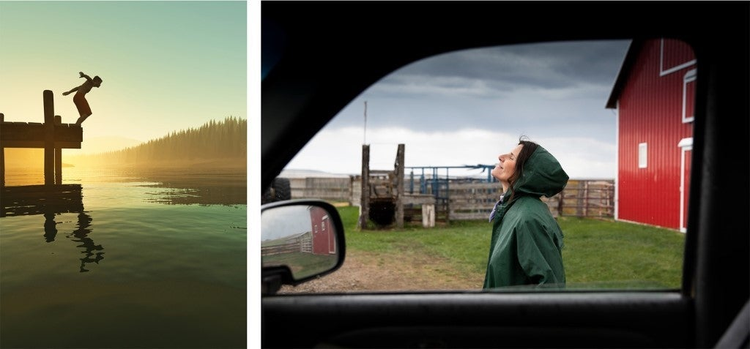
Image source: Left: Adobe Stock/Orlando Florin Rosu. Right: Adobe Stock/Hero Images.
Breath of Fresh Air
Cooped up inside for so much of 2020, we dreamed of an idyllic freedom found outdoors. Even a pandemic cannot squash the modern lust for travel, but it did change how we were able to approach it: more people shifted their plans to stay closer to home, exploring their local parks, spending time in their backyards if lucky enough to have them, and generally cultivating a closer relationship with nature. During quarantine, our need for immersion in nature and the outdoors to help create balance in our lives became a high priority, and brands responded, leading to our fourth visual trend, Breath of Fresh Air.
No matter where home base is — the country, the suburbs, or an urban center — the movement towards nature brings an immediate wave of relief from screen-and tech-overload. Along with those sensations has come a collective evolution in our understanding of and response to climate change, the environment, and sustainability.
Celebrating the regenerative powers of nature and the great outdoors can sometimes mean reveling in the novelty of simply going outside. For agencies and brands, this means visuals in every shade of green, fresh nature-inspired palettes, and imagery of folks from every demographic group and background, solo or in groups, interacting and reveling in the outdoors. Major fitness and basics brands like Athleta, Gap, and Old Navy are now emphasizing outdoor workouts, offering new essentials, like face masks.
Another facet of this trend has been a renewed respect for indoor plant care and outdoor gardening. Urban people have been driving a strong demand for greenery, turning wispy air plants and plump succulents into must-have home décor accessories. This, too, reflects the desire to connect with nature — and to feel the satisfaction of working with our hands and helping something grow.
Gallery: Breath of Fresh Air on Adobe Stock
Stay tuned for our 2021 Design Trends, Motion Trends, and Audio Trends, all launching this week. Here is a quick taste of what is to come.
2021 Design Trends
Pastoral dreams meet restrained theatricality in Austere Romanticism. In part a response to the pandemic (similar to the Breath of Fresh Air visual trend), these designs offer a Victorian-tinged take on the beauty of nature with a minimal, modern edge.
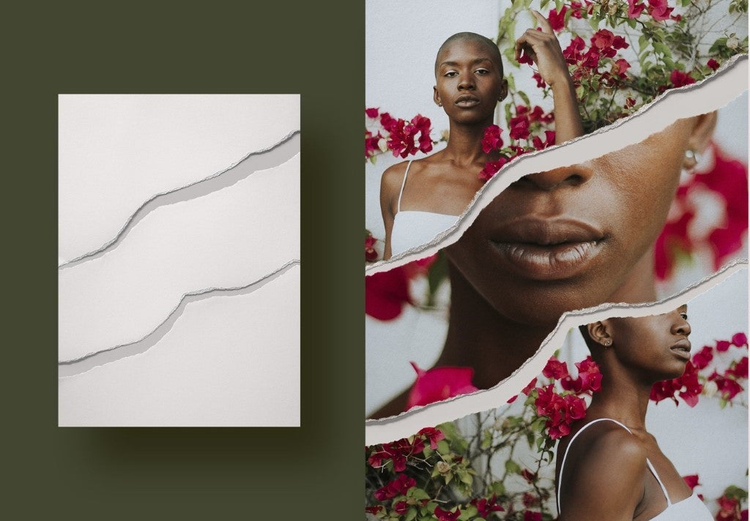
Image source: Adobe Stock/ More Profesh.
A visual love letter to the 1990’s internet, Vintage Vaporwave mixes pop art and outlined sticker graphics, bright pastels matched with neutral tones, and lo-fi design elements. Checkers and grids, random tiling of pattern elements, and cheeky cartoons keep these designs full of movement.
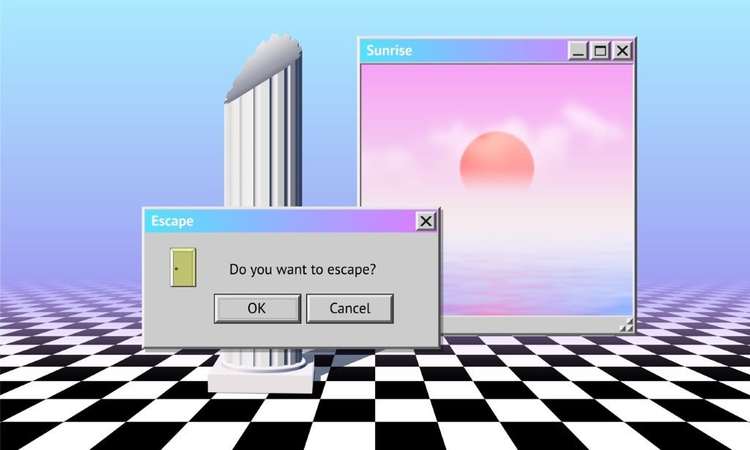
Image source: Adobe Stock/ swillklitch.
Bauhaus design provides an inspiration for an updated return to form and craft, with balanced layouts and graphics that create powerful, direct messaging. This trend includes a return to the fundamentals with clean, geometric shapes, strong yet harmonious elements, and vibrant primary colors.
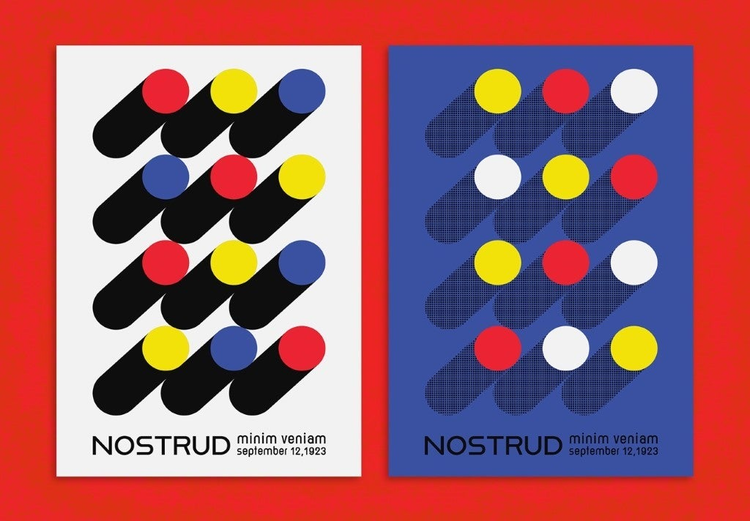
Image source: Adobe Stock/ blackcatstudio.
With design roots in the psychedelic 1970s and the Art Nouveau movement, the Psych Out design trend is funky, escapist, and bold. Expansive shapes, curvaceous forms and typefaces, and dreamy illustrations are updated with iridescent gradients and unexpectedly earthy color palettes.
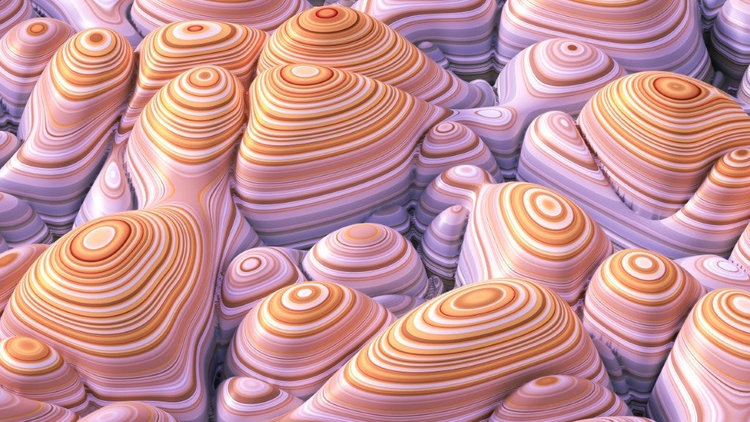
Image source: Adobe Stock/ Pierell.
2021 Motion Trends
As COVID-19 challenged the world and drove budget cuts and cancellations for shoots, many brands responded by embracing a video trend that has been on the rise for a while now: true user generated content (UGC), and the DIY look of content created in the moment. Handheld footage and the UGC aesthetic have been dominant across industries and we will see it everywhere in 2021.
Image source: Adobe Stock/Jacob Lund.
Media Replacement — the ability to add swappable images and video to motion graphics — has dramatically lowered the barrier to entry for creating complex motion pieces. Video editors, social media creators, and knowledge workers are now creating professional-quality videos by inserting photos and videos into motion templates to increase production value, communication, and make videos come alive.
Image source: Adobe Stock/JacGeorge Media.
To communicate more effectively and capture attention, creators are incorporating seamless transitions and graphical elements into videos to bring their stories to life. Colorful transitions draw the eye powerfully from one scene to the next or reveal titles and logos within a commercial. While the use of animated transitions and overlays is not new, the fresh incarnations and popularity of these techniques is notable.
Image source: Adobe Stock/Wavebreak Media.
Gradients have jumped from the pages of graphic designers to the screens of video editors. The blending of vibrant colors can grab attention and at the same time offer a calming presence in unsettled times. Smooth, multicolor gradients are rising in popularity in major brand campaigns, identity design, and more.
Image source: Adobe Stock/alexey_boldin/Pond5
2021 Audio Trends
This year marks the first time Adobe Stock will include Audio Trends as part of our annual Creative Trend forecast, and we could not be more excited. Our creative team, together with our partners Epidemic Sound, went to work reviewing the most requested, most searched, and bestselling audio clips, artists, and genres to bring you the trends we will all be hearing throughout 2021.
Today, listeners expect diversity and inclusiveness in visuals and the music within their videos, too. In response, video editors and producers are actively seeking audio tracks to help create a global, modern feel to their branded content.
Image source: Adobe Stock/OverheadProductions/Pond5
With hundreds of thousands of podcasts available and millions of people listening to podcasts in the USA alone, podcasting has definitely gone mainstream. Video editors, producers, and advertisers are all on the hunt for music to create podcast stories and ads.
Image source: Adobe Stock/Overheadproductions
Electronic productions are clean and contemporary, with a huge variety of subgenres to suit any need. We are hearing electronic sounds everywhere, with explosive growth in online videos and social media, and a rise in popularity around subgenres including Future Bass, Electrofunk, and Synthwave.
Image source: Adobe Stock/gonin